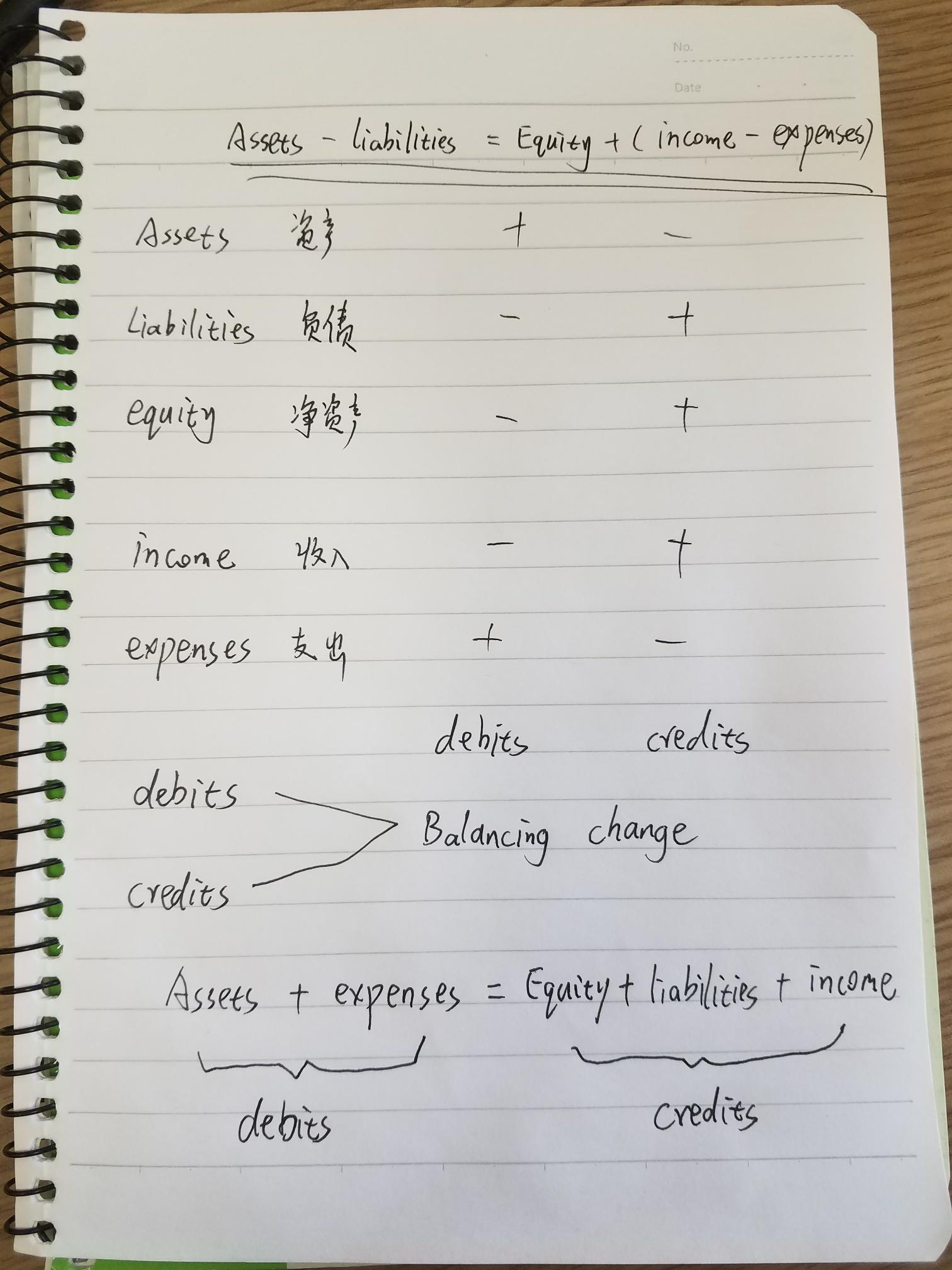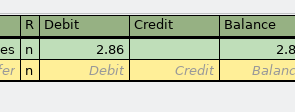管理, 是成就人生的第一步. 管钱,是第一步中的第一小步.
选了又选,终于选了一个软件,gnucash,
但是, 他有点专业, 用之前需要搞懂一下会计概念. 即: 复式记账
gnucash手册的这一章就在讲, 但是讲的不是很清楚.
https://www.gnucash.org/viewdoc.phtml?doc=guide
这里牵扯到三层概念:
1. 帐户概念还比较好理解: Assets, liabilities, equity, income, expenses
2. 权益平衡, balanceing change
3. 两个账户操作: debits, credits
2,3 理解起来就非常的困难了. 读一下wiki:
https://en.wikipedia.org/wiki/Debits_and_credits
https://www.zhihu.com/question/20718557
Generally speaking, the sources for spending money in transaction account is credit (that is,
an entry is made on the right side of the account's ledger) and what the money
obtained with the credits is destined as debit in transaction accounts (that is, an entry is made on the left side).

理解了基本的会计原理之后, 我推荐下边这个对个人帐户管理有指导意义的章节.
https://www.gnucash.org/viewdoc.phtml?doc=guide
当然, 我更推荐通篇阅读全部文档.
=======================================================================
1.
既然我们理解了借贷的概念. 那么如果不用借贷概念的话, 反而会糊涂. gnucash默认的标题并不使用 debit/credit.

那么我们想要改成上图这样样子, 让自己显得很专业很装比怎么办呢?
点击edit菜单->perference -> 勾选 Use formal accounting labels. 如下图:

2.
遗留的一个问题是, 怎么理解Equity账户下面的子帐号opening balance. 以及在每一个账户的register window里都出现的balance字段.
理解了好久, 看了好多文档. 最后突然去查了一下字典. 才发现, 原来balance还有一个中文意思就是余额的意思啊.
余额! 额.... my poor english.
然后, opening balance也就好理解了. 就是初始创建(opening)账户时的余额啊....... --!